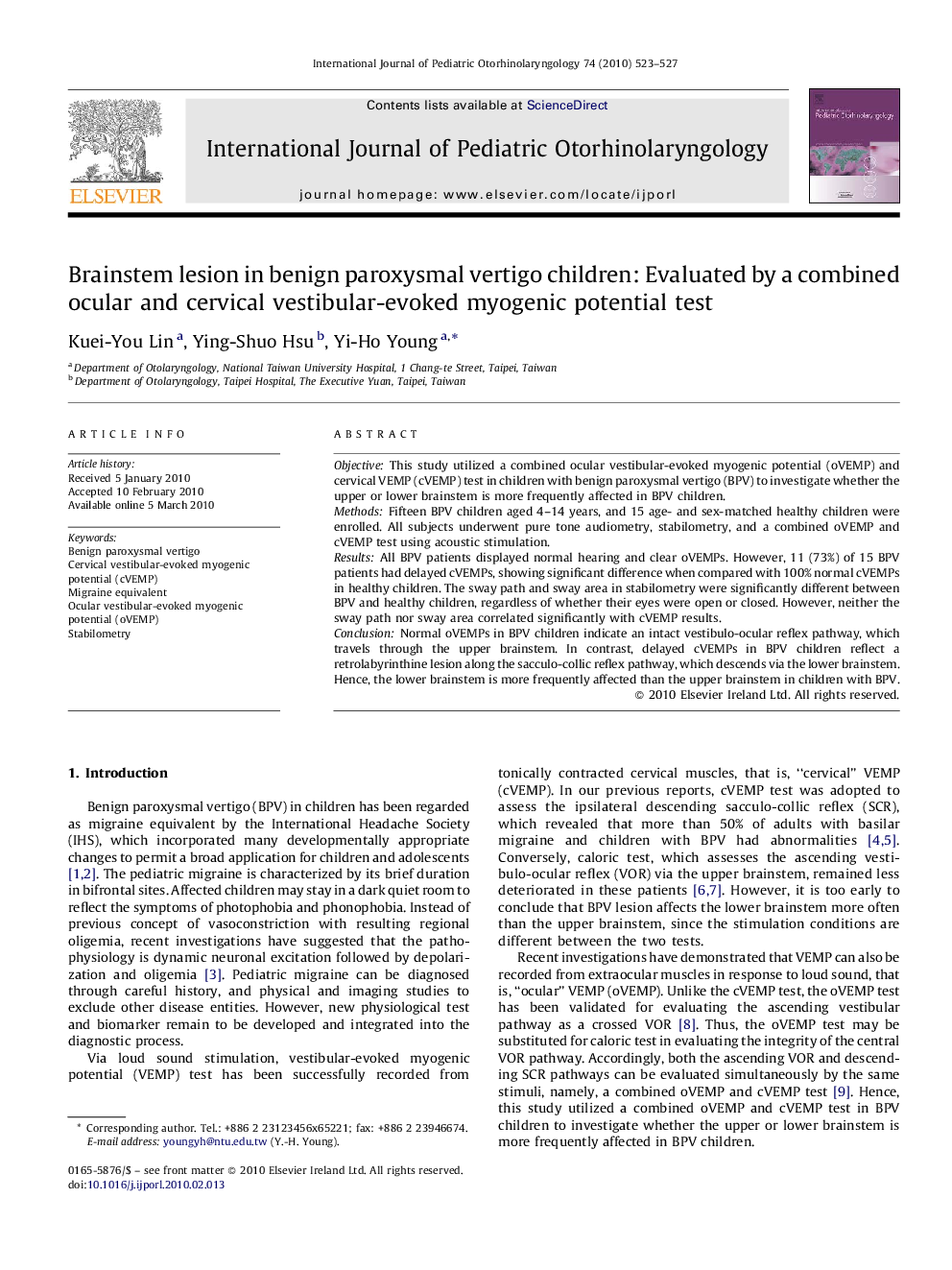| کد مقاله | کد نشریه | سال انتشار | مقاله انگلیسی | نسخه تمام متن |
|---|---|---|---|---|
| 4114240 | 1606058 | 2010 | 5 صفحه PDF | دانلود رایگان |

ObjectiveThis study utilized a combined ocular vestibular-evoked myogenic potential (oVEMP) and cervical VEMP (cVEMP) test in children with benign paroxysmal vertigo (BPV) to investigate whether the upper or lower brainstem is more frequently affected in BPV children.MethodsFifteen BPV children aged 4–14 years, and 15 age- and sex-matched healthy children were enrolled. All subjects underwent pure tone audiometry, stabilometry, and a combined oVEMP and cVEMP test using acoustic stimulation.ResultsAll BPV patients displayed normal hearing and clear oVEMPs. However, 11 (73%) of 15 BPV patients had delayed cVEMPs, showing significant difference when compared with 100% normal cVEMPs in healthy children. The sway path and sway area in stabilometry were significantly different between BPV and healthy children, regardless of whether their eyes were open or closed. However, neither the sway path nor sway area correlated significantly with cVEMP results.ConclusionNormal oVEMPs in BPV children indicate an intact vestibulo-ocular reflex pathway, which travels through the upper brainstem. In contrast, delayed cVEMPs in BPV children reflect a retrolabyrinthine lesion along the sacculo-collic reflex pathway, which descends via the lower brainstem. Hence, the lower brainstem is more frequently affected than the upper brainstem in children with BPV.
Journal: International Journal of Pediatric Otorhinolaryngology - Volume 74, Issue 5, May 2010, Pages 523–527